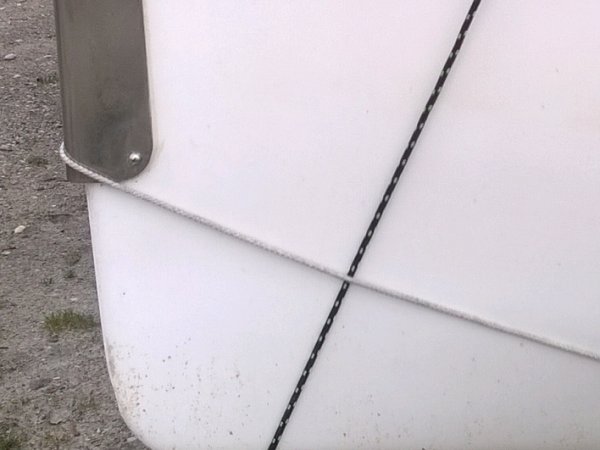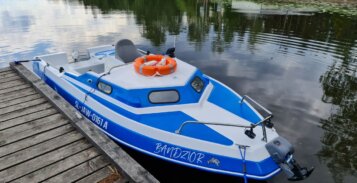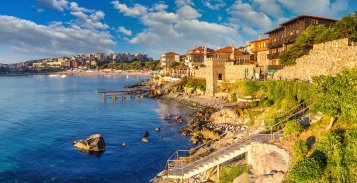
„The holiday period ended and my yacht was left for 2 months in one of the north ports of Giżycko. Sailors know that it is related to the permanent exposure to strong Autumn winds which may contain many pollutions and enhanced probability of the settlement of algae and lichens on the bottom of the yacht. That’s what indeed happened to my Twister. When in November I pulled it out from the port basin, sadly I noticed what I had expected – the bottom was almost completely black due to the lichens.
Just before the arrival, on the Internet I was watching products of various companies and I came across C1 Sea-Line – the anti-fouling product. As a rule, I do not trust new products without getting an opinion about them, but a simple description of use and a comfortable sprayer tempted me to buy this product. While washing the yacht there was a drizzle which made it more difficult to maintain the applied anti-fouling product on the hulk so I continuously had to cover the elements, which I was washing, with a tilt.
At the same time I was hurrying because it seemed that there was going to be a downpour in the evening. In spite of inconvenience and the lack of appropriate equipment (I was spreading the anti-fouling product with a simple brush and the rain was rinsing it), the effect was surprising. Just like it says in the manual, after the second wash, the yacht looked the way it looked like during the regattas – white and fragrant. Anti-fouling C1 is an excellent product for a very affordable price. I have experienced myself that it is worth buying Sea-Line products, therefore during the next season I am going to secure the whole bottom with Sea-Line® S4 Protect Wax.”
We kindly thank Jacek from Warsaw for the materials.

Ci spiace, ma questo articolo è disponibile soltanto in Polacco e Inglese Americano.

Opinion of our distributor from Bulgaria, Nicolai from Watersports Equipment – Varna, who works with Sea-Line for 5 years. “Watersports […]

Opinion of our distributor from Switzerland, Jürg from ANWANDER – Näfels. ‘My name is Jürg Iselin from ANWANDER in Switzerland. […]

Opinion of our distributor from Gibraltar, Gaynor from GIBYACHTS – Gibraltar. “Wanted to take few moments to talk to you […]
We do not recommend using universal thinners. The use of a thinner with an unknown composition may result in loss of adhesion, lack of proper flow of paint and varnish defects.
We recommend to always sand the surface between applying two different products to ensure uniform surface roughness and adhesion of subsequent layers. The sanded surface should also be cleaned and degreased.

Il patch e compensare le irregolarità derivanti da danni durante la produzione

Barca protezione superficiale contro l’influenza di azioni distruttive di osmosi e la corrosione in ambienti difficili

Protezione contro l’acqua e contro gli effetti negativi delle radiazioni UV

Proteggere la parte inferiore della barca prima-tedesco ricoperta di alghe e conchiglie. La prevenzione dell’azione di acqua.

Rimozione efficace di ritenzione graffi, di aggiornamento e il colore del mantello gel o lacca

Laminazione, incollaggio e tappatura perdite

Per il riempimento di piccole fessure e ubyt gemme in gelcoat

Una gamma di prodotti utili quando si lavora costruttore di barche